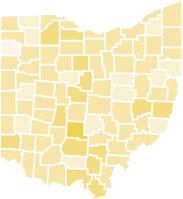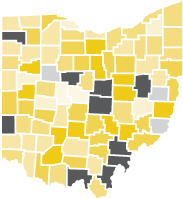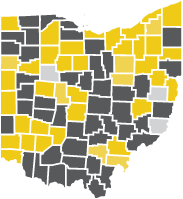Report on Stewardship 

Mitchell Balk, left, and Marc C. Krantz
Dear Friends of Mt. Sinai:
Welcome to The Mt. Sinai Health Care Foundation’s electronic annual report. We have again chosen this format so that the work of the Foundation is accessible to the entire Cleveland community, including Mt. Sinai donors, partners, grantseekers, civic leaders and friends.
Mt. Sinai’s Work in Early Childhood Obesity Prevention
The Mt. Sinai Foundation has spent a busy and productive year focused on prevention of obesity in early childhood. Ever since Foundation grantmaking began in 1997, Mt. Sinai has paid special attention to a child’s earliest years. Back then, emerging neuroscience research stressed the importance of brain development in the first three years of life. As a new health grantmaker, we worked to put that research into practice by field-testing and evaluating the Born to Learn™ home visiting curriculum of the national Parents As Teachers organization. Also at that time, following the lead of Cuyahoga County and the Cleveland Foundation, we stepped up and provided key leadership and funding for the Invest In Children program. To this day, we continue our involvement in this vital program to insure that our community’s youngest and most vulnerable families have what they need to give children the best start they can have.
When the Foundation began developing its strategy for moving the needle on the problem of childhood obesity, we of course thought about our overall strategic approach – grantmaking in the areas of primary prevention and early intervention. Although our name may indicate otherwise, our focus is not on health care services, but rather on health before care. It’s the old Ounce of Prevention/Pound of Cure juxtaposition that Benjamin Franklin put so well.
When it comes to the childhood obesity battle, there is both good and bad news.
The bad news is we have a serious problem that, if left untreated, will have dire consequences for both individuals and for American society as a whole. Epidemiologists fear that, for the first time, our current generation of young people may have a shorter life expectancy than their parents.
The good news is that this problem can be solved. This epidemic is not, heaven forbid, an incurable disease. It is life-threatening. But we can, with the necessary participation from all parts of our society, treat it successfully.
The Foundation’s strategic grantmaking focus continues to include:
Improving the Health of
the Jewish Community
Our founding constituency to whom we belong.
Improving the Health of
the Urban Community
Serving where the need is greatest.
Academic Medicine and Bioscience
Continuing Mt. Sinai’s leadership role in this area and safeguarding the charitable intent of many Mt. Sinai donors.
Health Policy
Working alongside government to ensure a strong safety net for children, the elderly and the poor, and implement the requirements of the federal Affordable Care Act.
How big is the problem of childhood obesity?



2-5 Year Olds1
10-17 year Olds2
Adults2
It will not be easy. Because while we understand scientifically that the problem of obesity is simply “calories in versus calories out,” like so much of life, the key to solving this problem on an individual basis may be “all between the ears.” We must understand both the physical manifestations of obesity as well as the psycho-social elements of why people eat to excess. We must look to public policy to address obesity as a societal challenge, but at the same time we must find a way to influence individual behavioral change in both adults and children.
We will all enter the health care system at some point. We will all experience illness. The approach of the Mt. Sinai Foundation has always been to reduce risk factors that cause poor health, beginning with the early childhood population. The significance of the obesity epidemic in the United States cannot be understated, and we believe health philanthropy, along with government, can begin to tackle this most pressing problem.
For all these reasons, the Foundation hosted a Summit on early childhood obesity prevention on June 18, 2012, at Severance Hall in Cleveland. More than 250 professionals gathered to learn about emerging best practices being implemented in Cleveland (you may view portions of the Summit via video by visiting the Summit page of this report). Two of those best practice interventions are highlighted in this year’s annual report. Mt. Sinai support of Jump To It and Breast for Success represents how the Foundation is taking action to address the alarming rate of obesity in children from two to five years of age. Together with our many partners, we hope to create a healthier generation of Greater Cleveland’s children and spread our work throughout the northern Ohio region and beyond. We invite you to learn about our progress to date and welcome your support as we work to improve the health of our community.
Sincerely,

Marc C. Krantz
Chair, Board of Directors

Mitchell Balk
President
 < 5%
< 5% 20-24.9%
20-24.9% 5-9.9%
5-9.9% 25-29.9%
25-29.9% 10-14.9%
10-14.9% >= 30%
>= 30% 15-19.9%
15-19.9% N/S
N/S
1 Cuttler, L., Singer, M., Simpson, L., Gallan, A., Nevar, A., Silvers, JB. 2009. Obesity in Children and Families across Ohio, 2008. State of Ohio: Department of Insurance, Department of Job and Family Services, Department of Health, and Department of Mental Health. Ohio Family Health Survey, 2008-09 Ohio State University, Ohio Colleges of Medicine Government Resource Center, Columbus, Ohio. The Center for Child Health and Policy at Rainbow Babies & Children’s Hospital and Case Western Reserve University and the Child Policy Research Center at Cincinnati Children’s Hospital and the University of Cincinnati.
2Polhamus B, Dalenius K, Mackintosh H, Smith B, Grummer-Strawn L. Pediatric Nutrition Surveillance 2009 Report. Atlanta: U.S. Department of Health and Human Services, Centers for Disease Control and Prevention; 2011.
Maps originally developed by University Hospitals Rainbow Babies & Children's Hospital and The Center for Child Health & Policy.

